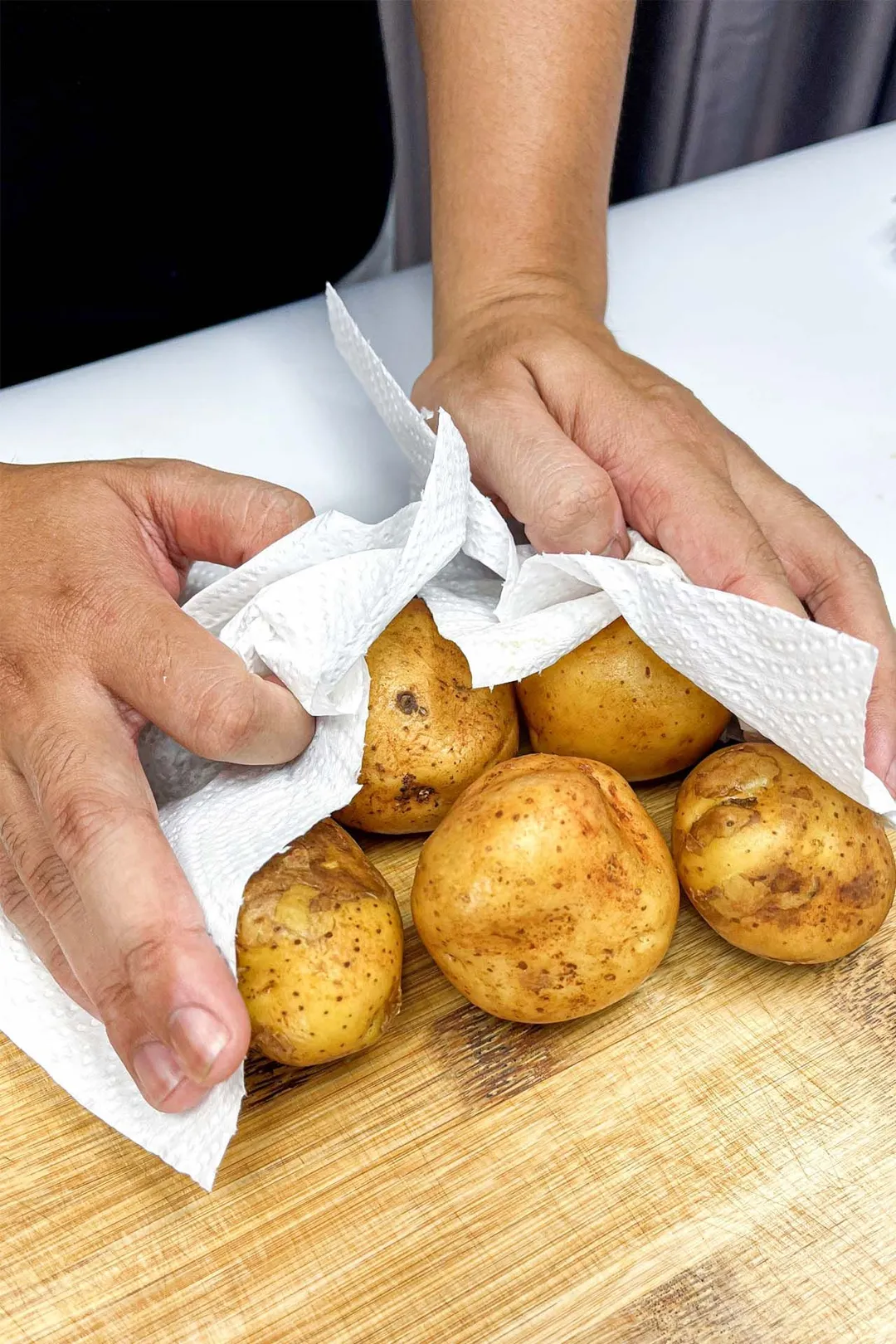Today's episode on food storage is all about how to store potatoes.
It’s easy dealing with just a few potatoes, but if it’s kilos we’re talking, you want to make sure they’re good for months to come. In today’s article, we’re looking in depth at the popular storage methods and what happens when they’re stored the wrong way.
Where to Store Potatoes
Let’s go through the popular storage places as well as their pros and cons.
In the Kitchen
Potatoes prefer that cool, ventilated corner of your kitchen where the sunlight can't reach. They're good for a week or two before going spoiled.
If you place them by the window, exposing them to sunlight, or simply keep them somewhere warm, they will sprout. After all this time picked up off the ground, placed on shelves, and now taken home with you, they’re still alive and respirating. They have been producing solanine, but now that they’re sprouting, they overproduce it, turning green and bitter.
At a high concentration, such as that in the sprouts, this substance may cause death on consumption.

In the Fridge
Raw potatoes can last in the fridge for up to one month. But did you know, they are actually encouraged to be kept out of the fridge?
Looking as if doing nothing, potatoes are constantly converting starch into sugar and burning that sugar for energy, until they sprout or die. Most root vegetables do this to keep themselves alive until the sprouting conditions are met.
At temperatures below 40 F, which is the temperature inside your fridge, respiration stops, but sugar conversion still goes on. This is called ‘Cold-Induced Sweetening’, potatoes becoming sweeter in time due to cold temperatures. Not just the taste that’s the problem—sugary potatoes also go brown more easily when cooked, producing more ‘acrylamide’, a harmful carcinogen.
Still, you can’t really keep potatoes in the kitchen during summer months—they will go bad really fast. Resorting to the fridge then would be wise, but of course, there are a few things to keep in mind (we’ll get into this later).
If the potatoes have been peeled or cut, consider freezing. The exposed area will go brown quickly in the fridge.
In the Freezer
If stored well, potatoes can last for up to 3 months. Cold-induced sweetening won’t take place because it’s too cold, the potatoes are likely to stop functioning. Changes in texture should be minimal, considering most of their entire makeup is starch.
Frozen potatoes are troublesome to work with, so people often cut and blanch them before storage.
The Best Way to Store Potatoes
In the fridge or freezer, there are a few things you can do to maximize the potatoes’ shelf life.
Store Raw Potatoes in the Fridge During Summer
If you’re going to wash your potatoes, pat them dry before storage. Moderate moisture is necessary for potatoes, but excessive moisture creates the ideal environment for bacteria to thrive. Yes, there are bacteria inside your fridge floating about, partly immobilized but pretty much still active.

The fridge’s dry atmosphere will also suck your potatoes dry, make them wrinkle and spoil faster. Ideally, put them into the crisper drawer, as it provides the perfect humidity level.
There’s no crisper drawer? Consider cooking them up and freezing them.
Freeze Potatoes
Cut and prepare them as we’ve demonstrated in this article, then divide the potatoes into portions that you will consume in one sitting. Place each portion into a container or Ziploc bag, whichever works best for you, label them with dates, and freeze. The container prevents water crystals from forming on the potato.
Can you not blanch and just freeze them straight after cutting? You could, but then you won’t save much time as you have to spend more time cooking them later on.

If cut into strips or small cubes, the cooked potatoes do not require thawing at all. They can go straight from the freezer into the oven, air fryer, or deep fryer.
Store Cooked Potatoes in the Fridge
Some potato dishes are not freezer-friendly.
Take leftover baked potatoes for instance—they should be refrigerated only. High chances are they’re already with toppings such as cheese and bacon, so it’s best to keep them in airtight containers and use them within 4 days.
Store Cut Potatoes
Sometimes the recipe calls for potatoes measured in grams or ounces, which requires you to use half, or a third of a potato. You usually cut one in twos or threes, and refrigerate the parts you’re not using. Do so and you’ll end up with a browned potato the next day, not the ideal storing method.
The better way is to cut those parts into cubes, slices, or however you want, cook them, then freeze them. But sometimes you don’t have the time to mind other things than your current recipe, so try this instead:
Clean those parts thoroughly, then soak them in a bowl of water so the exposed surface doesn’t turn brown. Use mason jars for this task. Then put them in the fridge, and they’re good for the next 24 hours:

After that, the cold temperature starts to penetrate and they begin to turn sweet. If you don't mind the sweetness, they technically last for up to one week before the water-borne bacteria take over.
Tuyet Pham
Head Chef, Culinary ConsultantLuna Regina
Writer, Author
